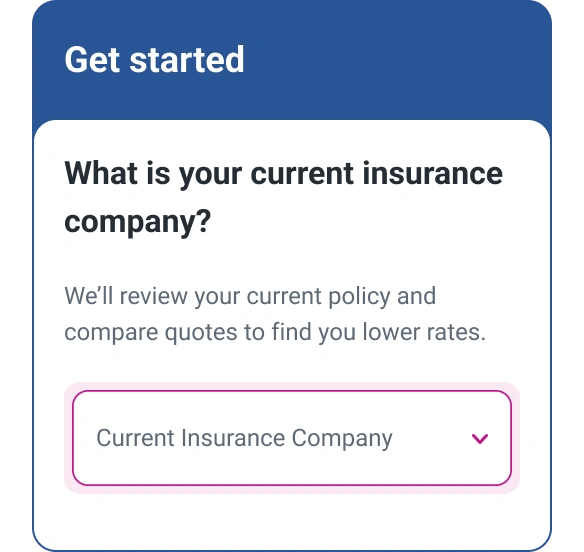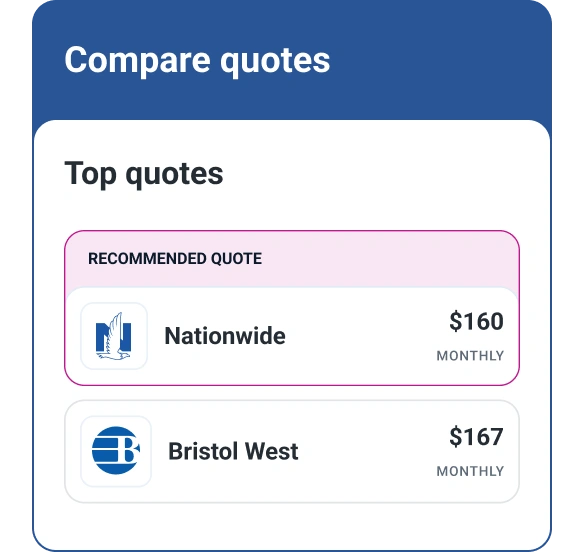What to Do if You Can’t Afford Car Insurance
Quick Answer
If you can’t afford car insurance, don’t go without. Instead, try to find a more affordable policy by increasing your deductible, downgrading your coverage, looking for discounts, driving less and comparing prices from multiple insurance companies.

If you're having trouble paying your car insurance premiums, the worst thing you can do is cancel your coverage. Going without auto insurance is illegal in most states, and it could open you up to severe financial consequences if you get in an accident.
Instead, if you can't afford car insurance, here are some potential steps you can take to address your budget or reduce your monthly premiums.
1. Adjust Your Budget
When your expenses rise, adjusting your budget can help, as can looking for ways to cut spending so you can afford car insurance. Here are some tips to help you get started:
- Look back a few months. Look at your income and expenses over the past few months to get a general sense of your spending habits. Categorizing your expenses can give you a more detailed view of where your money is going.
- Zero in on discretionary spending. For example, you may want to cancel unused subscriptions or offer to share them with friends or family members. You may also opt to eat out less, cut your clothing budget or minimize your online shopping.
- Don't ignore necessities. While you can't cut necessary expenses completely, there may be opportunities to reduce what you're paying. For example, you can swap brand-name groceries with generic brands or try to negotiate utility bills.
2. Increase Your Deductible
Your car insurance deductible is your out-of-pocket expense when you file a claim for collision, comprehensive, uninsured motorist or personal injury protection coverage. In most cases, deductible options range from $100 to $2,000.
Although it may be tempting to select a lower deductible, opting for a higher one can help lower your premiums. That said, it's important to make sure you have enough emergency savings to cover the deductible amount.
Example: According to the Insurance Information Institute, increasing your deductible from $250 to $500 could reduce the cost of collision and comprehensive coverage by 15% to 30%. Raising it to $1,000 could translate to 40% or more in savings.
3. Reduce Your Coverage
Insurance experts generally recommend that you maintain at least $100,000 per person and $300,000 per accident for bodily injuries, and $100,000 for property damage. If you have more than that, reducing your liability insurance limits could help you save money.
Additionally, if you have an older vehicle that's paid off, it may not make sense to maintain collision and comprehensive insurance coverage. For example, if you have a $500 deductible and a car worth $2,000, the most your insurance would pay if the car were totaled is $1,500—which may be less than you pay in insurance premiums over the course of a year.
On the other hand, if you're struggling to pay car insurance, you might not be able to replace a totaled car without financial help.
4. Drop Add-Ons
If you're worried about cutting your liability, collision and comprehensive coverage by too much, it could make more sense to minimize your optional coverages.
For example, if you have rental reimbursement coverage, windshield replacement coverage, roadside assistance or a vanishing deductible add-on, removing those could help you save money without sacrificing the more important coverages.
Learn more: Auto Insurance Add-Ons That Can Save You Money
5. Look for Discounts
Most car insurance companies offer a wide range of discounts that can help you cut your costs. Here's a quick list of some example discounts you may come across:
- Safe driver discount: You might qualify for savings if you go several years without accidents or tickets or if you've completed a driver safety course.
- Student discount: If you or your child is a student with good grades or is attending school away from home, you may be able to shave some money off your premium.
- Multi-policy discount: Many insurers offer savings if you bundle your home and auto insurance with the same company.
- Antitheft device discount: If your vehicle has an alarm or other types of anti-theft features, it could help you save.
- Telematics discount: Some insurers offer programs where you give them access to your driving data, either through a mobile app or a plug-in device. If you show consistent responsible driving habits, you could qualify for a discount.
6. Drive Less
Many insurers offer low-mileage discounts, usually for those who drive less than 7,000 to 7,500 miles per year. This may require reporting your odometer reading to the insurance company or having a tracking device placed in your car.
Another option is pay-per-mile car insurance, which charges a monthly base rate for a certain number of miles, plus a per-mile charge for every additional mile. Carpooling, taking public transit and walking or biking whenever possible could help you drive less and save money.
Keep in mind that these steps may not result in an immediate reduction of your premiums. However, they may help you save money in the long run.
7. Change Vehicles
Your insurance rate is determined in part by the vehicle you drive. In particular, models with higher repair or replacement costs, poor safety ratings and higher theft rates are more expensive to insure.
Trading in or selling your car in exchange for another model can potentially help you slash your insurance bill. If you have a luxury sports car, for instance, trading it in for a standard SUV could potentially save you money.
That said, the car-buying process comes with its own costs, so it's crucial that you research models with affordable insurance to maximize your savings.
8. Shop Around
Auto insurance premiums can vary widely from one insurance company to another. Obtaining quotes from several insurance carriers can help you get the coverage you need at the best price.
As you go through the process, though, it's important to make sure you're comparing the same type and amount of coverage. Streamline the process by using Experian's free auto insurance comparison tool. It gathers quotes from top insurance companies all in one place for easy comparison.
9. Improve Your Credit Score
Insurance companies in most states may review your credit-based insurance score when setting your car insurance rates. These scores differ from your consumer credit scores but are based on similar factors, such as your outstanding debt and payment history.
The same actions that can help boost your consumer credit score, such as paying bills on time, could improve your credit-based insurance score, which might mean paying less for car insurance.
Potential ways to improve your credit can include:
- Checking your Experian credit report and FICO® ScoreΘ to spot problem areas
- Getting caught up on past-due payments
- Paying down credit card balances to reduce your credit utilization rate
- Minimizing new credit applications
- Asking a loved one to add you as an authorized user on their credit card
Frequently Asked Questions
The Bottom Line
Car insurance may be expensive, but going without it can cost you much more if you're involved in an accident. Shopping around to find the best prices, looking for discounts and maintaining good credit can all help you cut the cost of car insurance so you can afford the protection you need.
Don’t overpay for auto insurance
If you’re looking for ways to cut back on monthly costs, it could be a good idea to see if you can save on your auto insurance.
Find savingsAbout the author
Ben Luthi has worked in financial planning, banking and auto finance, and writes about all aspects of money. His work has appeared in Time, Success, USA Today, Credit Karma, NerdWallet, Wirecutter and more.
Read more from Ben

